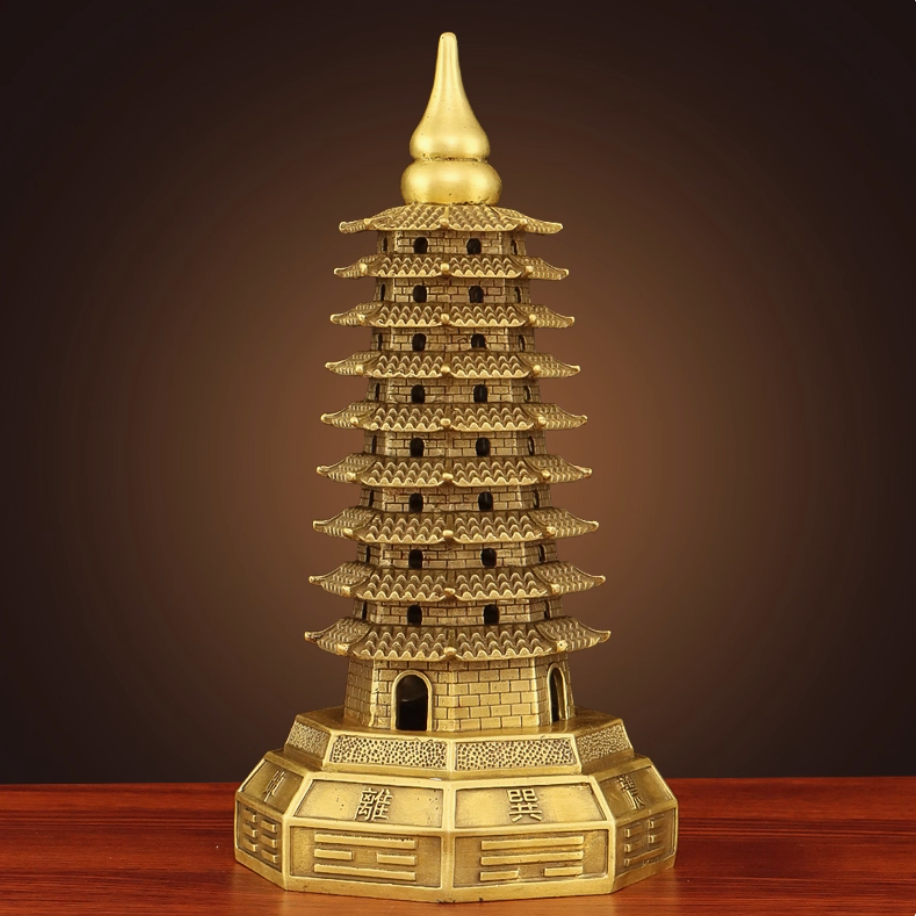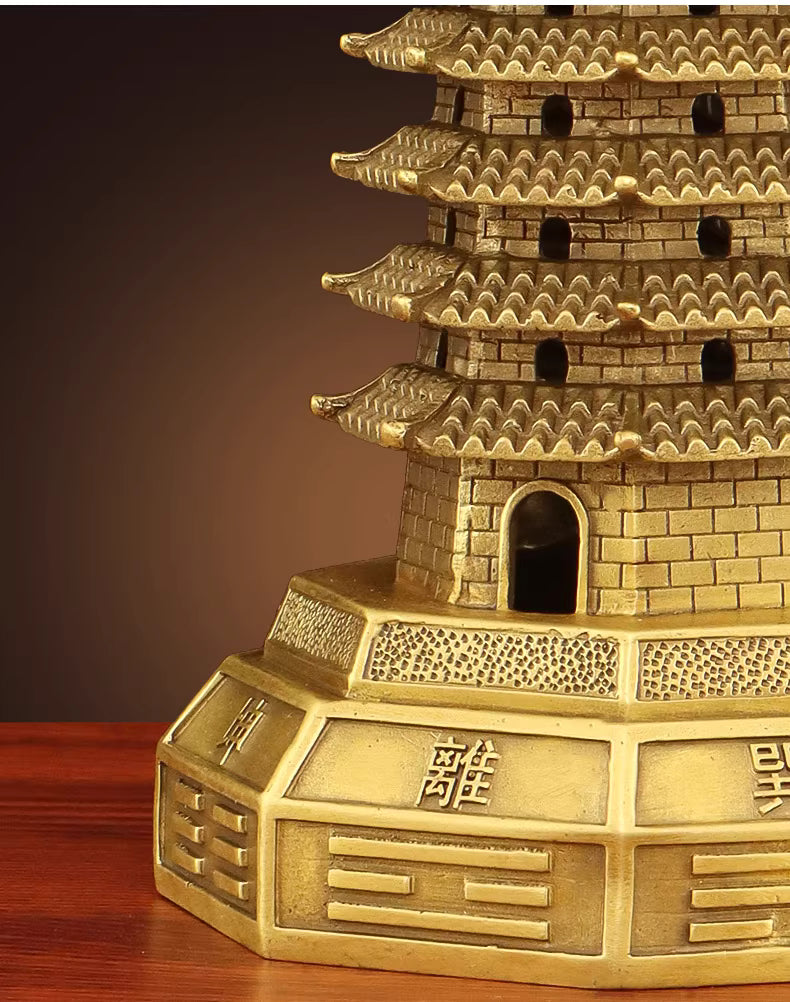Echohome
Bagua Wenchang Tower
Bagua Wenchang Tower
Couldn't load pickup availability
Origin and Cultural Background
The Wenchang Tower, also known as Wen Chang Pagoda or “Education Tower,” is deeply rooted in Chinese feng shui traditions. Historically and architecturally found in southern China and Vietnam, it emerged as a Feng Shui remedy to enhance literary success and educational achievement. Its iconography evolved from Buddhist-style pagodas, but its purpose is secular and scholarly, not religiou.
Symbolism & Function
This tower symbolizes academic wisdom, career advancement, and mental clarity. In feng shui practsice, it is regarded as a talisman that absorbs negative energy (“煞气”) and stabilizes the home’s energy field. Different tiers carry unique meanings: a 9‑tier model encourages well-rounded success, while 7‑tier supports both scholarship and career celebrations
Material
Traditionally made from metal (especially bronze), though modern variants use crystal, jade, or resin. Metal towers are believed to best support the intellect and career by harmonizing elemental energies
Placement Recommendation
Place on study desks, office desks, or in the designated “Wenchang sector” (education/literature) to enhance concentration and academic luck .
Ideal desk position is the upper-left corner (“Green Dragon position”) to follow the “left in, right out” principle—bringing in positive qi .
Also suitable behind an office chair for career authority, or beside a bed for students to boost exam performance .
Placement Avoidance
Avoid placing near toilets, kitchens, bedrooms, or underneath beams—anywhere with disruptive or negative energy .
Do not position opposite to Buddha statues or align with sharp objects, as this may undermine its feng shui effect.
Keep the environment bright and electrically clean; do not place next to electronic appliances
Share




